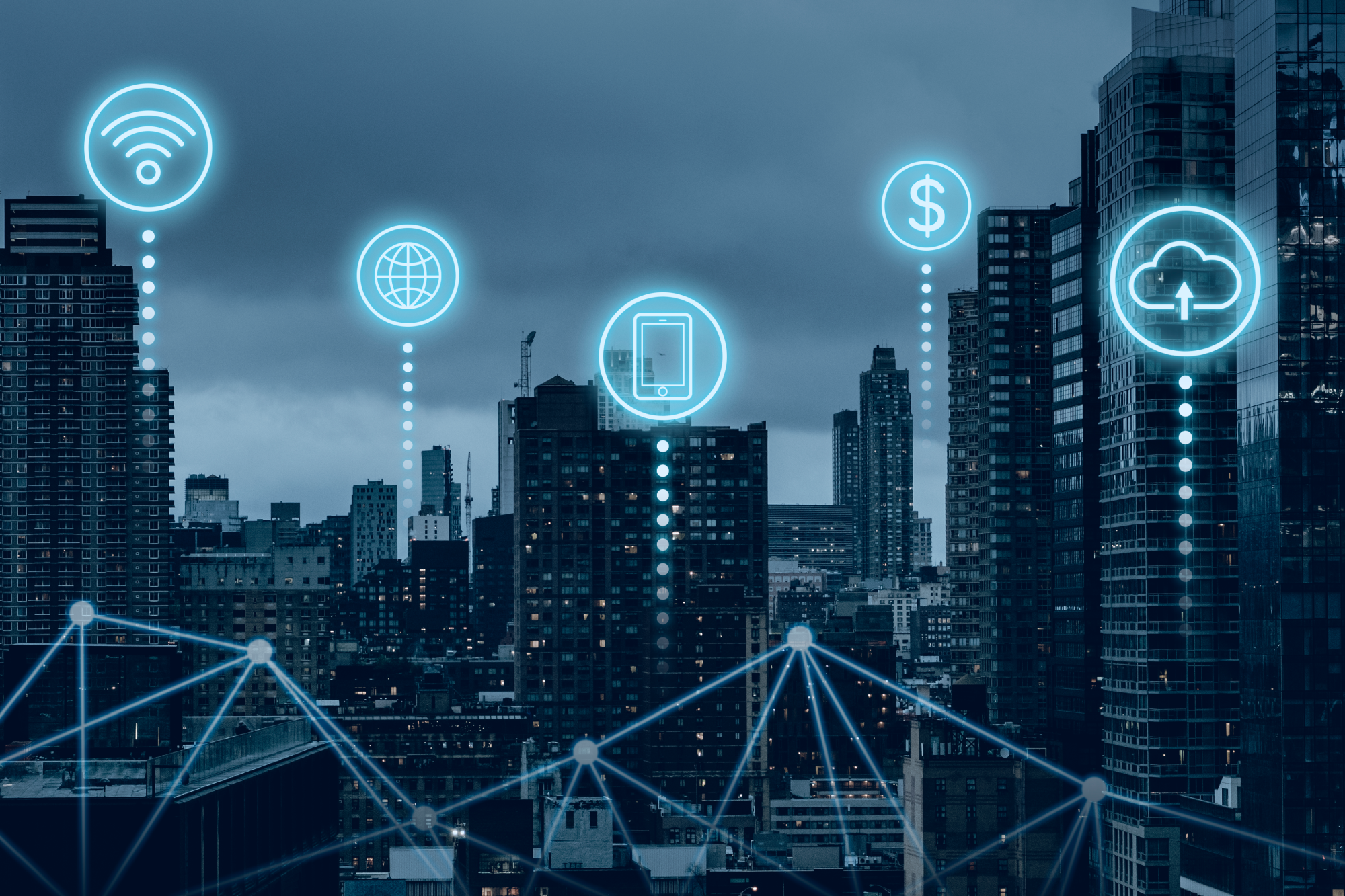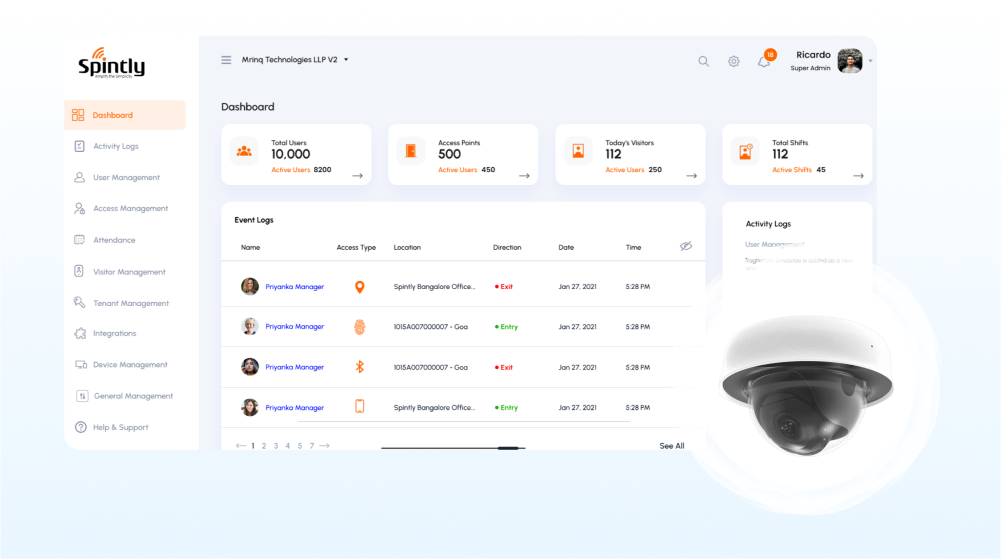BIOMETRICS – The Future and Recent Trends in Access Control
Biometric Security Systems Explained
What is the purpose of biometrics in access control?
To begin with the history, the term biometric is derived from the Greek vocabulary, where Bio means Life and Metric means To Measure. In simple words, the biometric access control means a keyless and wireless access control solution used to identify a person using their unique facial characteristics, fingerprints, signatures, DNA, or iris pattern and gain access to doors, gates, locks, and more. Biometrics is one of the fastest and growing technologies which can be employed at any place to easily authenticate users as well as provide access control to designated areas.
The major benefit and differentiator of employing biometrics is the complete uniqueness it provides to each person and the inability to replicate the scanned data or physiognomies. Despite all the advanced spy films and spy devices available in the market nowadays; it is very difficult to fake the unique characteristic of an individual and trespass a biometric access control system.
Biometric access control systems are incredibly safe and can often be paired with other security elements to build a robust security ecosystem. Biometrics tops the list among other security systems because of the fact that everyone has different biometric characteristics which cannot be replicated unless the physical presence of the user himself. Thus, biometrics is not only a full proof method of identity management but is also reliable, authentic, accurate and traceable.
Types of Biometric Access Control System:
Whether for security or access or fraud prevention, biometrics come in various forms suitable for every business and personal need. It is majorly divided into two types – Physiological and Behavioural Biometrics.
Physiological biometrics includes: Finger prints, Finger/hand veins, Hand geometry, Iris recognition, Retina scan, Facial recognition, Ear shape, Voice recognition, Thermography recognition, DNA matching and so on. Whereas Gait, Lip movement, Keystroke, Signature recognition comes under behavioural biometrics.
Both the physiological and behavioural biometric system either uses infrared technology or video (camera) or both video and infrared to capture the unique features of the user to identify and validate individuals. Thus the primary purpose of biometrics is achieved by providing authentic protection to prevent unauthorized access, which otherwise can be easily tampered as in the case of keys, ID cards, passwords or pins.
Features and Uses of Biometric Access Control System:
Biometric Security Systems Explained
Currently, biometric access control systems have become more and more popular in our everyday lives and businesses, as well as an integral part of the fast-growing smart access control system as a whole. The mere reason for this popularity and acceptance is its vast uses.
- Unique to each user – Biometric is unique compared to other security and identification systems because of its uniqueness! As the biometric system uses the unique physical characteristics of the user, the security and authenticity it provides is unwavering and unshakable.
- Not replicable – One of the major benefit of deploying biometric access control system over traditional security systems is that biometric data cannot be replicated and no two biometric data readings are the same ever. Hence, it is extremely hard to trick a biometric scanner without the permitted user present physically.
- Cannot be shared – It is needless to say that the unique physiognomies such as fingerprint, facial features or iris pattern cannot be shared with anyone, thus ensuring an effective and secure access control and identity management system.
- Simple management and ease of use – Biometric system provides its admin an ease of simple management which involves a simple procedure to add, edit and remove the users from its database. Without compromising on the security, the system is as easy as just placing your thumb on the pad or just standing in front of the reader to identify the facial features or iris pattern!
- Efficient, quick and no human errors – The smallest of smallest error which can happen by a human is almost entirely removed with the use of a biometric access control system and the speed at which a biometric system confirms an identity is much quicker than the traditional manual system.
- Traceable and lowers theft or breach – Biometric system allows the admin to know who exactly has accessed a certain area or door and at what time. This traceability and transparency will reduce any possibility of theft, illegal activity or crime due to the fear of being caught.
- Reduced costs and no replacement fee – Installation of a biometric system doesn’t involve much costs and it also reduces the number of security staff as well as long working hours. Apart from this cost advantage; it also saves admin effort and time of replicating the lost/damaged physical ID cards or keys.
- Two-factor authentication and added layer of security – Another advantage of biometrics is that it can be easily paired with other security elements/systems to build a secure and comprehensive approach, that covers all bases.
Smart phone based biometric systems are gaining reputation and are gaining popularity due to ease of adoption. Our smartphones have now become an integral way to prove our identities and authenticate ourselves to gain permission to enter or exit a designated area or door. The multi-factor authentication using smart phones is not only a more secure, doubly-sure and convenient way of access control but also doesn’t demand for any extra hardware or devices to be installed.
Conclusion
There was a time when biometric access systems were seen in Hollywood movies where the Hero or Villain used his fingerprint/retina/iris/voice to open a secret door; and later in reality biometrics was only limited to government offices, the military, and law enforcement sectors. But in recent years, the biometric access control system has exploded and has rapidly spread across all sectors. Conventionally, there are many options available for identification, security and access control; but nothing can beat the biometric access system as it provides military-grade security with a super easy user interface, without putting a load on the pocket.
Why Spintly
Spintly offers expedient and seamless biometric access control solutions across various market segments and business sectors. Spintly’s smart phone-based biometric solution for visitor management, multi-location controlling, identity management and access control is the perfect choice for all those who are looking for a Secure and Smart TOMORROW!!





